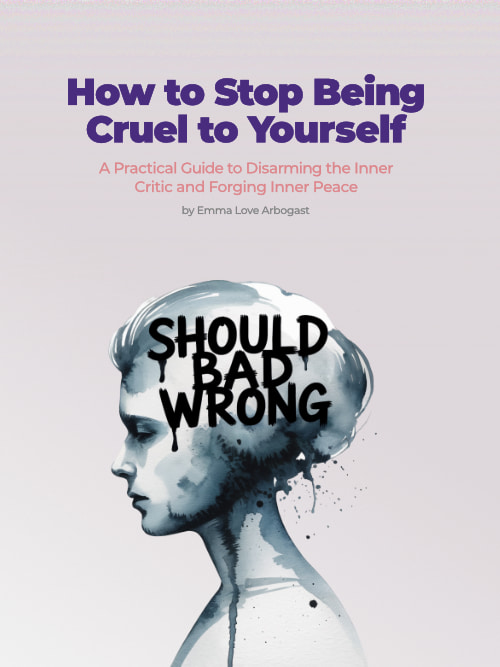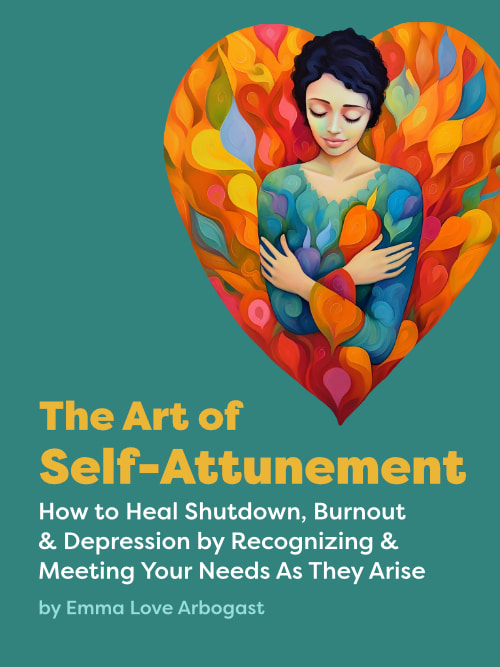What to Do When You Feel Triggered
When you are triggered, your autonomic nervous system is reacting to messages from your brain that you are in danger. Your body’s survival mode kicks in, which results in primal responses:
- fight – lash out in anger without thinking
- flight – urge to leave the situation immediately
- freeze – suddenly go blank or feel spaced out
- fawn – do anything you can to make the other person happy with you
This happens extremely quickly and without your conscious control. What you can control is what you do next, as soon as your conscious choice comes back online.
The very best thing you can do is pause.
Why? Because when your brain kicks into threat mode, it turns off your higher brain functions — i.e. the ones that think ahead, and know about consequences.
You don’t need those if you really are in danger—the problem is that when you are triggered, you probably are not actually in life-threatening danger, so reacting will only lead to more pain later.
So, pause. Say:
- Hold on
- I need a time-out
- Give me a minute
- I’m overwhelmed right now
If you can’t get calm within a few minutes, leave the situation and say you’ll check back in later when you are more connected to yourself.
If the person you are with is more understanding, you might explain further. This is not just for you, it’s for both of you—because if they keep talking, you will just get more triggered.
- I notice I’m getting triggered. It’s OK, I just need a minute to calm down.
- What would help is if we could be quiet for a few minutes.
- I can’t take in any more information right now.
What if you are alone and getting triggered from something you are reading? Then it’s even simpler:
- Disengage from the triggering thing.
- Turn off your notifications if you have to.
While you are paused, ground and reconnect to yourself. Don’t just scroll on your phone mindlessly. Use the time to re-regulate your nervous system, and then to understand why you got triggered.
To immediately feel calmer, engage your senses:
- Feel where your body contacts whatever surface it is touching. Feel the weight of your body.
- Feel your feet under you if you are standing, or your body if you are sitting down.
- Tune in to any sounds happening around you. If you can, name them. “I’m hearing the fridge humming.”
- Feel the way the breathe feels in your nostrils as you breathe in and out.
- Look around and name objects in the room. “I see a lamp. I see my iPad. I see my water bottle.”
- Notice your body sensations. “My heart is racing. My hands feel cold.”
This is what mindfulness actually means—it means noticing what is happening as it happens. It’s a really good thing to practice in general, so you can be used to it when you are triggered.
This is a magical step that seems too easy to be actually helpful. But it works because it literally engages a different part of your brain. Instead of spinning in an emotional whirlpool or staying in a heightened fight-or-flight mode, you are forced to direct your attention to factual, neutral things that are outside of your own mental stories. It has an immediate grounding effect.
When you feel grounded again, do some journalling. I find it is best to write out the answers rather than think of them, because it engages my body and my whole brain in mindfulness.
- What actually happened? (i.e what would a camera record—not your interpretations of what it meant, but what physically occurred)
- What emotions and body sensations do you notice? (“My heart is racing. I feel angry and hurt.”)
- What story are you telling yourself about what happened? (i.e. what are you making it mean?)
- How is this familiar – the feeling or the story? (does it remind you of any past events?)
- What do you need in the situation?
Use the needs list to identify your needs.
If you are still feeling upset, your most likely need is validation.
Validation is the need to hear, “Your feelings make sense. Of course you feel that way.”
There are two good ways to get validation at any time:
- self-validation — a great skill to learn generally
- using AI/ChatGPT —it is usually validating by default, but it doesn’t hurt to prompt it by saying you need validation and empathy, so it doesn’t just give you advice
What to NOT do when triggered
Do not try to resolve conflict while you are triggered or reactive.
You will only make it worse.
If you find that you can’t help it, do this exercise when you are not triggered: Sit down and write down all the recent times you tried to resolve conflict when you were even mildly upset, and ask how many times it helped. Reinforcing to yourself the actual results of your behavior can help you have the motivation to control it in the moment.
The point to remember is that you will be hurting yourself by causing further drama in your life.
Do not try to get validation from the person who triggered you.
This is a good way to make them defensive and get back into an argument. The fact is, whatever they did, they already likely demonstrated that they can’t help you with your feelings.
It is rare that the person in your life who makes you upset also has the skills and presence to help you with that upset. It is almost always a better choice to seek out other resources or people to get empathy, validation, and understanding.
This can be very difficult to accept if you have the anxious kind of insecure attachment. It can feel like only their validation will make me feel better, and it’s so simple, why can’t they just do it? But this is simply not true. Your brain is lying to you. Sorry to be so blunt, but attachment trauma can create strong cognitive distortions that can lead to constant conflict cycles—the only way out is to learn to meet your needs independent of that person so you do not feel like your emotional survival depends on them listening to you.
How to make future triggers easier
There are several things you can do when you are not triggered to train yourself to respond differently the next time it happens.
The tricky part is to stay aware during the process that you ARE triggered. You have to keep a thread of awareness online that stays with you throughout the triggered state, so you can give yourself directives on how to get calmed down again. This is hard because of what we discussed above—the thinking part of your brain goes offline when you feel threatened.
Train yourself to recognize the early warning signs that you are becoming reactive.
If you recognize you are getting upset before you are in full threat-mode, you can much more easily take action to defuse the situation, take a break, etc.
Think back to the last time you got triggered. What happened in the lead up to that? Here are some potential signs you can start to notice:
- heart racing (adrenaline), discomfort in your stomach, clenching up
- emotions such as anger or fear or defensiveness or dread
- mental spinning
- going numb or feeling far away
- having a sudden urge to leave
- rehearsing conversations in your head, imagining both your part and the other person
- inner protest thoughts, like, “This isn’t fair!” or “They can’t do that!”
The more you know your own responses, the easier it will be to take pro-active steps when your next trigger happens.
Use self-talk to hang onto the awareness that you are actually triggered, so your thoughts are suspect.
Get used to talking to yourself about your current state. Just practice checking in with yourself every now and then.
- How am I doing?
- What do I need?
- What do I feel?
- Is anything bothering me?
That way you get used to being attuned to your inner world.
Then, when you are triggered, talk to yourself specifically about the fact that you are triggered. This stops the mind from ramping up by going into blame and defensiveness.
I’m triggered. That’s OK. It happens to everyone. My mind isn’t going to be clear for a little bit so I’m not going to take the things it says too seriously. Instead, I’m going to do what I know will help when I’m triggered.
Another trick is to notice, on a scale from 1 to 10, how upset you are. If you are in a relationship, it is helpful if both people can use this metric. Know what you need when you are at a 3, or a 5, or a 9.
Decide to do these steps whether you feel like it or not.
Unfortunately, you may not feel like doing these when you are triggered.
The thing to internalize is that you don’t have to feel like it—you just have to do it.
Feelings are not reliable indicators of the best course of action when you are triggered or upset. They will push you to attack or defend yourself, not to try to see the situation from an objective perspective.
So you have to make it a commitment:
I will do these steps whether I feel like it or not, because I know they work and will help me calm down and my life will work better.
Leave a comment below to let me know if this helped you, or share any tips that have helped you around your triggers.
Self-love is a set of skills you can learn

Stop Being Cruel to Yourself
$2.99


Hey there! If you're new here, welcome to the Emmaverse! 🌈✨
About me: I'm autistic/ADHD and I write about how to be free and happy from the inside out.
Keep in touch?
Self-Liberation Society


Nice piece! I do similar work with people seeking contentment and peace. A dear friend put your link up on my Facebook wall and I am enjoying your posts.
Our paths are sweetly similar.
Pace,
Valerie
Looking forward to future posts.
Hi Valerie! Glad you like the posts. I think we have connected before, on my other blog Tao of Prosperity.